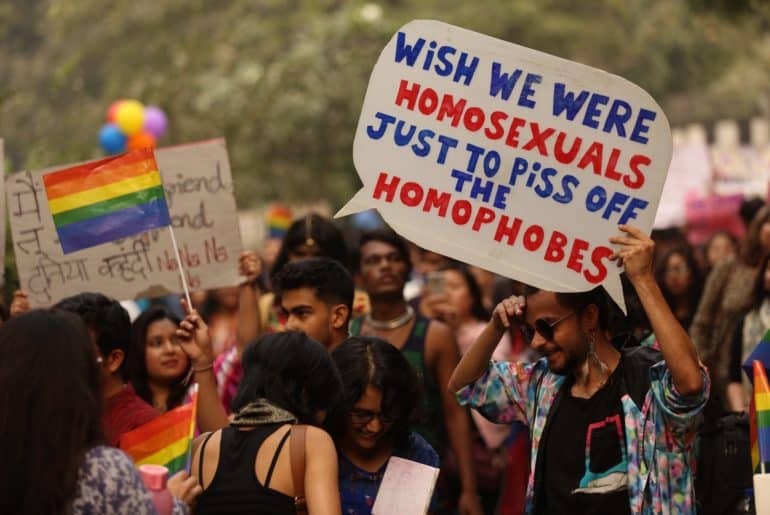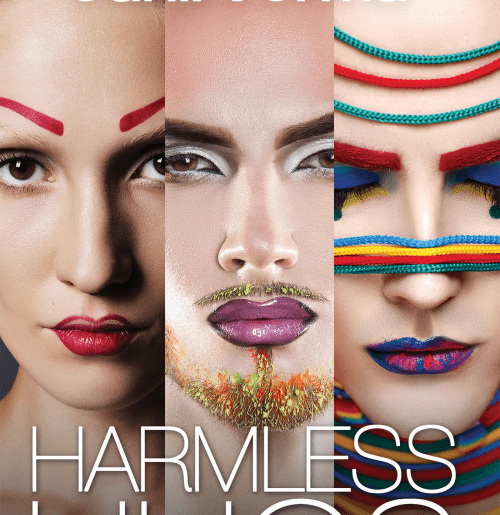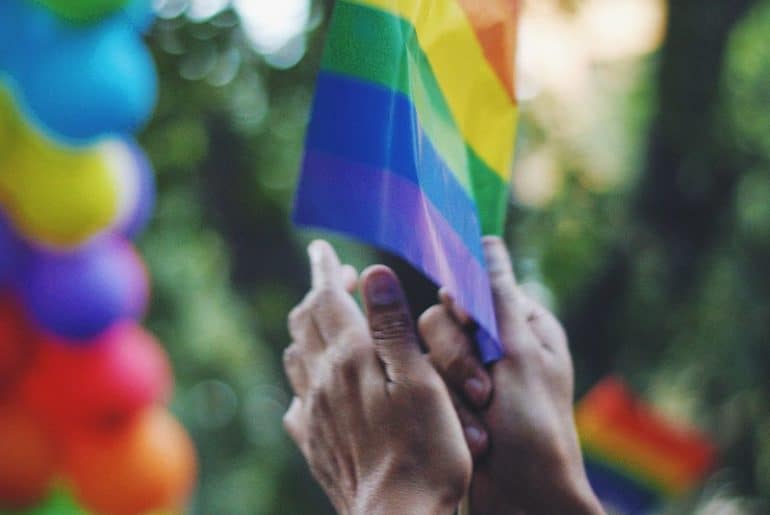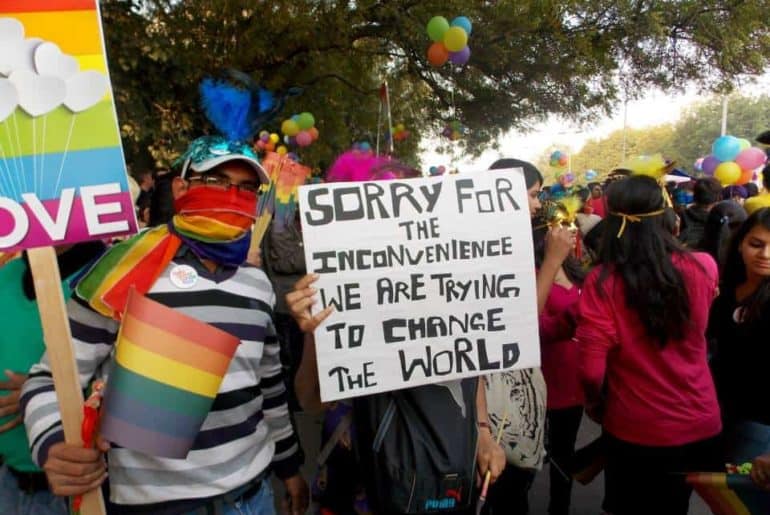Barakhamba Road at Delhi seemed to have been transformed into a gay wonderland drenched in rainbow flags, colourful balloons, and intelligible slogans along with its cheerful and ‘gay’ crowd, as it witnessed the 10th edition of the Delhi Queer Pride Parade. The parade held on 12th November celebrated the queer community of our country and, more than that, pressed their manifesto demanding equal rights for the community.
Every year, the pride walk provides a platform for the LGBTQ+ community to rejoice in their queerness, while it is an avenue for straight allies to show their solidarity and support. Here are some captivating glimpses from the 10th Delhi Queer Pride Parade.
In dark times, we must stay strong. With this resonation, people across Delhi met to sing, dance, and celebrate in an attempt to create a safe space where voices were raised and freedom was demanded. The pride walk was dedicated to people across all sexualities and genders who face discrimination and violence in their lives.
The LGBTQ+ community majorly fights against the dated colonial laws, in particular Section 377 of the Indian Penal Code that was reinstated by the Supreme Court in 2013. Under the effect of this law, any consensual homosexual conduct between two adults is illegal and thus punishable. Being queer is often labelled as a choice and a lifestyle – here, an attendee of the pride walk raises a fitting reply to such schools of thought.
Since pride parades create a safe space for the queer community, they provide a stage for members to dress how they want to with no sort of judgment or enforcement of any gender rules and norms. This helps members of the queer community to raise their voice and be proud of themselves and their identity, especially because they are constantly branded as ‘outlandish’, ‘abnormal’, ‘meetha’, and ‘chhakka’ in their daily lives. To see them take pride in themselves in a stereotypical and orthodox society like ours speaks of the heights of their courage.
Though the Queer Pride Parade is held every year, each year it seems fresh and empowering for its people. This year, the march held from Barakhamba Road to Jantar Mantar saw a spree of engendering queer folks who seemed to say a big “screw you” to heteronormativity. While some sang and danced their queerness out, the others appreciated them and captured these liberating glimpses. What was even more delightful was that the police personnel stationed throughout the length of the path also appreciated the queer community.
While the queer community members live in the constant fear of being ostracised and even disowned by society and, moreover, by their own families, for one day, all fears are put aside and courage is mustered to come forward and openly be themselves. Protesting voices raise their claim to live with dignity and security. Love is love, irrespective of gender and sexuality. It should not matter whether it is homosexual, bisexual, transexual, asexual, pansexual, intersex, non-binary, genderqueer, or so on.
The rainbow walk ends in front of Jantar Mantar each year and here, the Delhi Queer Pride manifesto is read out. The true festivities begin with innumerable and lush performances. Attendees go home with aching cheeks from all the smiling and cheering they’ve done throughout the day.
While the LGBTQ+ folks are fighting for legal recognition, it is equally important that our social and cultural spaces are inclusive to the community and that the queer population is embraced as equal children of Mother India. Proper sensitisation and open discussion is necessary to raise knowledge and acceptance. Moreover, heteronormativity needs to be challenged and inclusivity needs to become the norm. Pride is a moment of celebration where the stigma and shame the queer community receives is rejected and everyone exists how they wish to, free of social expectations.
Satrangi Salam!
Image Credits: Ayush Chauhan and P.V. Purnima for DU Beat
Varoon Tuteja
[email protected]























